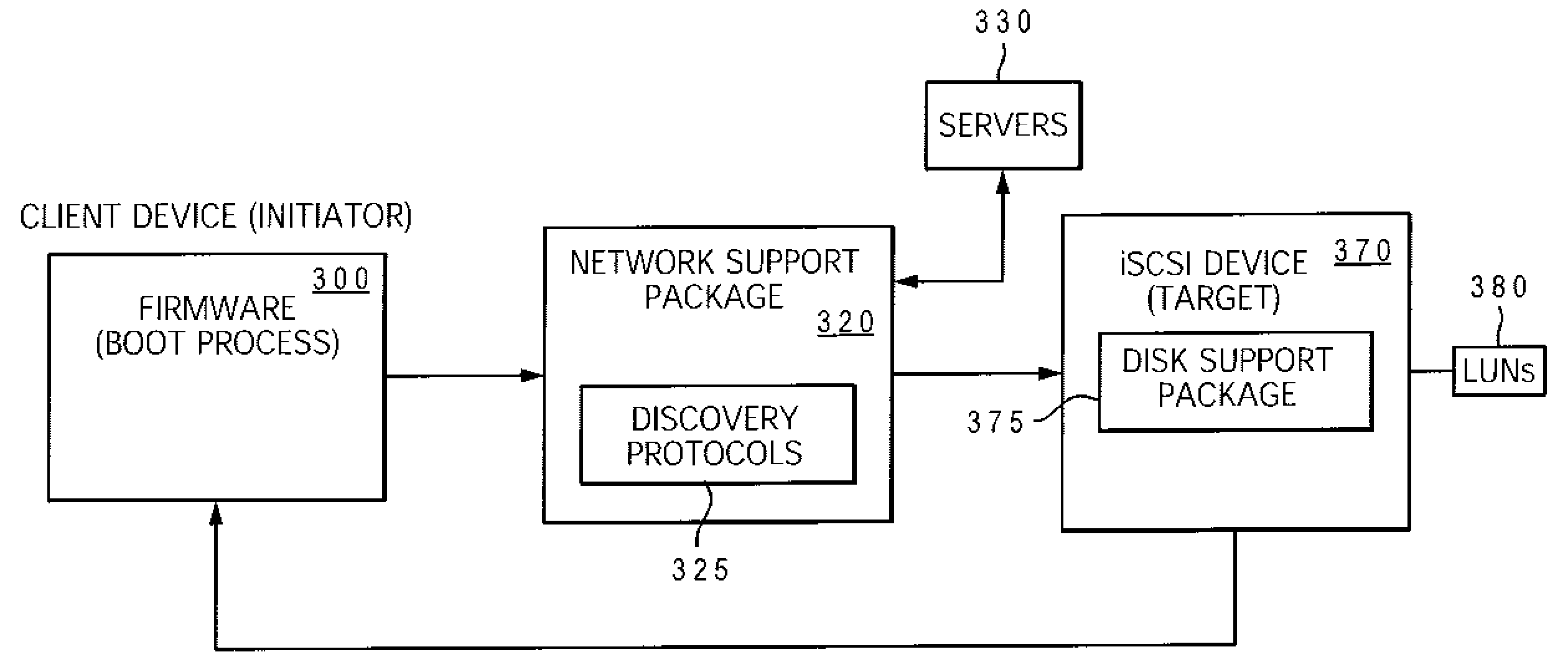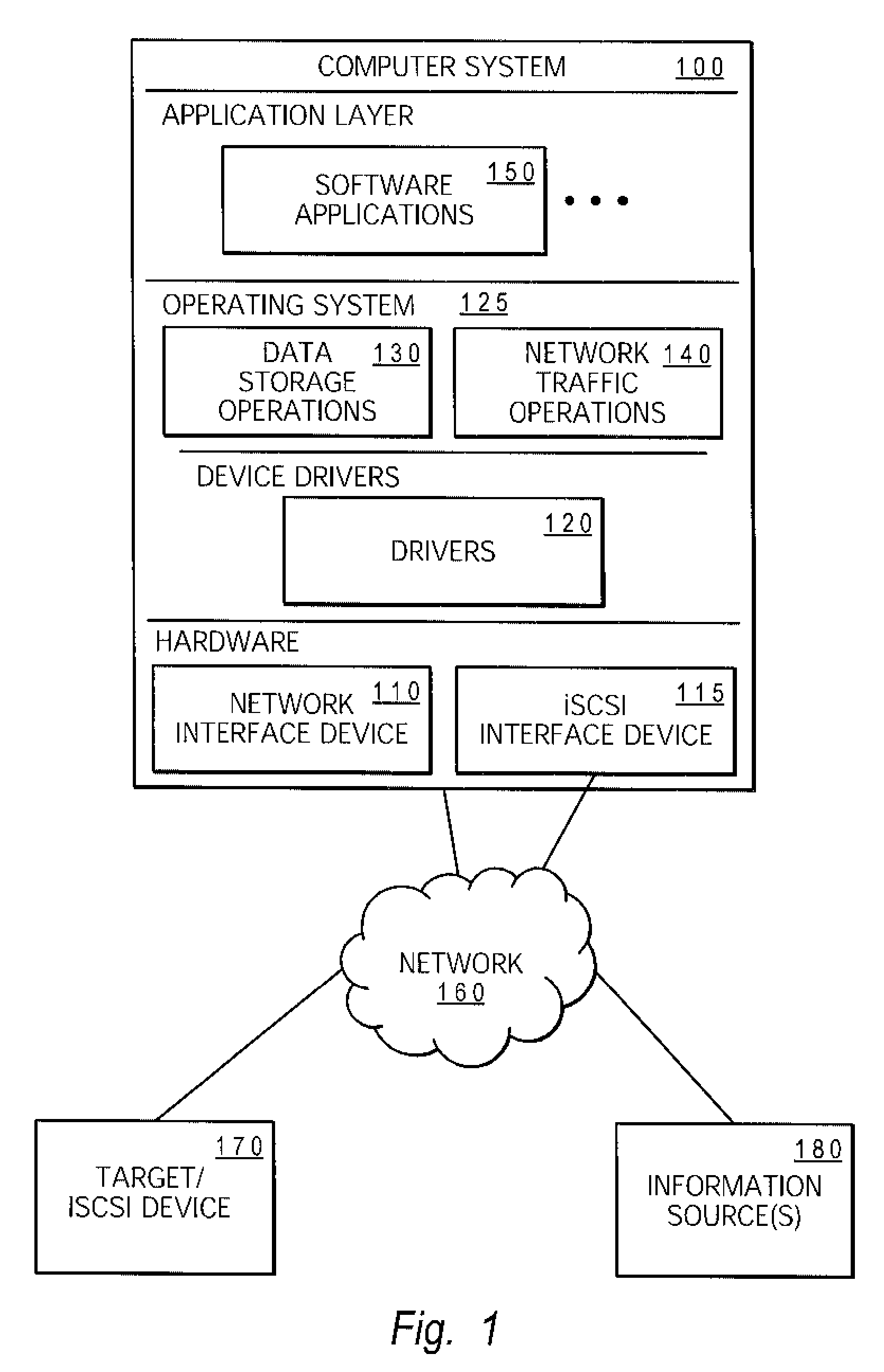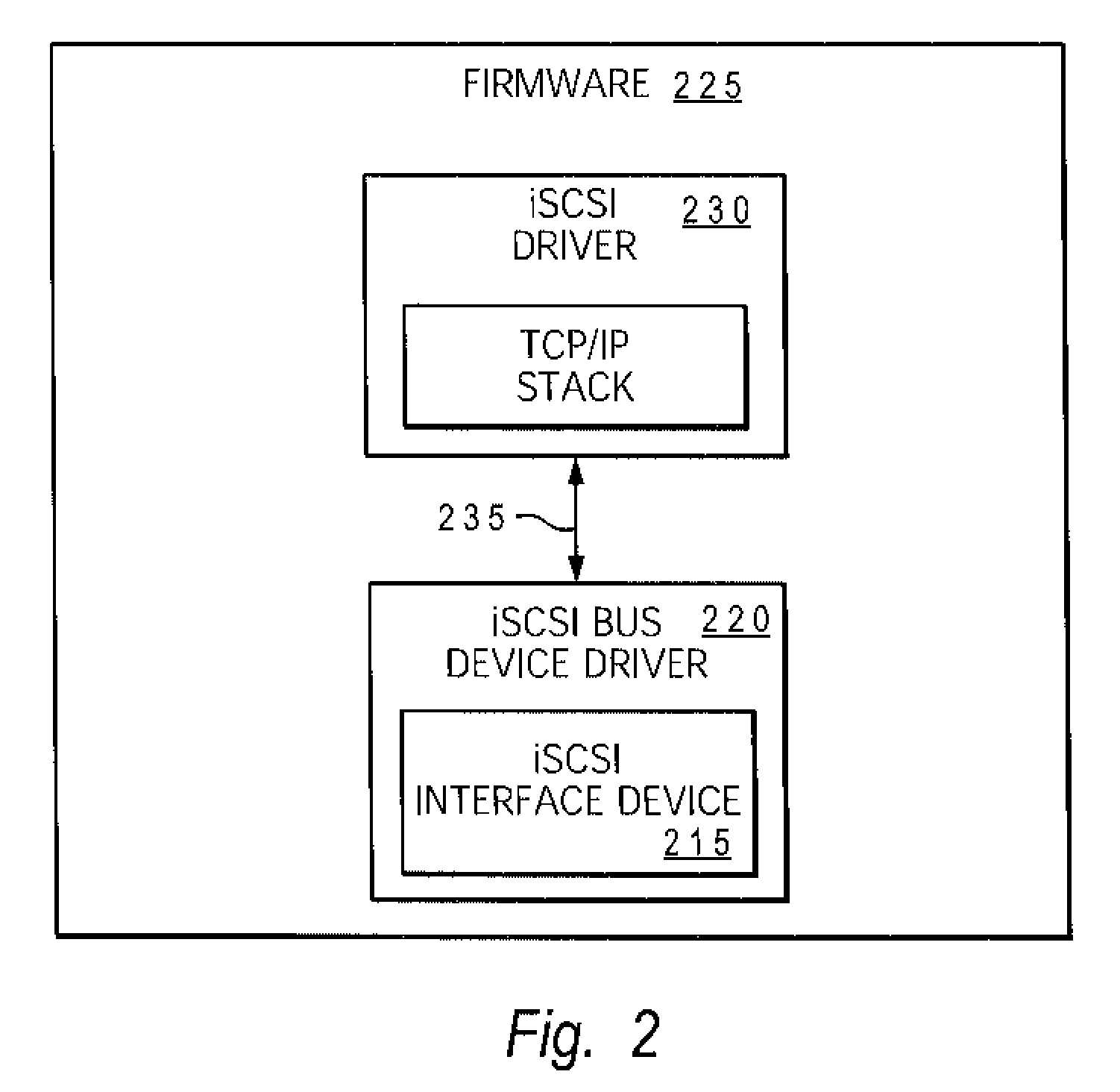Method to Enable Firmware to Boot a System from an ISCSI Device
a technology of iscsi device and firmware, which is applied in the field of computer system boot process, can solve the problems of inability of existing computer systems (absent specifically-provided firmware) to complete the boot process for new devices, inability of existing systems to boot client programs or operating systems from these new devices, and inability to efficiently boot operating systems (os). and/or client programs
- Summary
- Abstract
- Description
- Claims
- Application Information
AI Technical Summary
Benefits of technology
Problems solved by technology
Method used
Image
Examples
example 1
[0087]With the present example, a BOOTP server is utilized to acquire siaddr, iport, and iname. Other arguments that are not specified assume default values. Also, ciaddr is expressed in IPv6 format. [The process for utilizing IPv6 with iSCSI protocol is described in greater details within the commonly assigned and co-pending application AUS920060583US1, relevant content of which is incorporated herein by reference][0088]open network-device: promiscuous, speed=100, duplex=full, iscsi, ipv6, bootp, itname=init-name, ciaddr=init-addr, 2
example 2
[0089]With the current example, an SLP server provides the siaddr and iport for the specified iname. Again, other arguments not specified assume default values, and ciaddr is expressed in IPv6 format.[0090]open iscsi-device: speed=100, duplex=full, iscsi, ipv6, sip, iname=target-name , ciadd=init-addr, 2
example 3
[0091]With this third example, the diaddr DHCP server provides siaddr, ciaddr, ilun, iport, and iname, and diaddr is expressed in IPv6 format.[0092]open iscsi-device: duplex=full, iscsi, ipv6, dhcp=diaddr, chapid=target-chapid, chappw=target-chappw, 2
[0093]The above description of the invention involves the use of specific terms / terminology, some of which are defined by the IETF standards board. Where other names are utilized to describe similar functions and / or functionality, it is understood that the invention extends in scope to cover all general functions and / or features regardless of nomenclature utilized. It is also understood that the use of specific parameter names are for example only and not meant to imply any limitations on the invention. The invention may thus be implemented with different nomenclature / terminology utilized to describe the above parameters, without limitation.
[0094]As a final matter, it is important that while an illustrative embodiment of the present inv...
PUM
 Login to View More
Login to View More Abstract
Description
Claims
Application Information
 Login to View More
Login to View More - R&D
- Intellectual Property
- Life Sciences
- Materials
- Tech Scout
- Unparalleled Data Quality
- Higher Quality Content
- 60% Fewer Hallucinations
Browse by: Latest US Patents, China's latest patents, Technical Efficacy Thesaurus, Application Domain, Technology Topic, Popular Technical Reports.
© 2025 PatSnap. All rights reserved.Legal|Privacy policy|Modern Slavery Act Transparency Statement|Sitemap|About US| Contact US: help@patsnap.com



